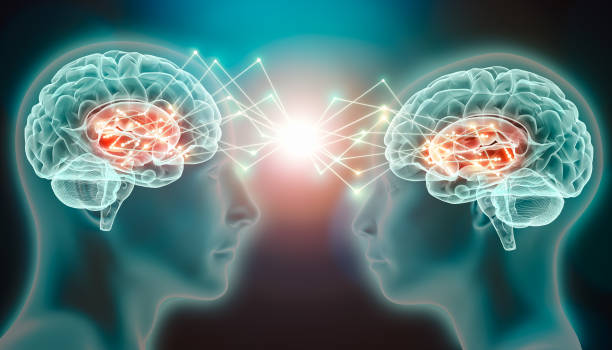Imagine this: a woman stands before a closed door. Behind it lies a relationship she knows is unhealthy. She’s walked away from it more than once. She’s felt the sting of manipulation, the hollowing silence after a fight, the shame that follows the apologies she didn’t receive. Yet, here she is again—her hand on the doorknob, her heart whispering louder than her logic.
Why?
Why do we return to what we know even when it hurts us?
Science, psychology, and even poetry converge on this strange gravitational pull toward the familiar. It’s not just about people or relationships. We fall into patterns—jobs that stifle us, beliefs that shrink us, habits that slowly harm us. Despite knowing better, we often feel powerless to break free.
This isn’t a failure of will. It’s a story as old as the human brain. And when we truly understand it, we start to see ourselves with compassion instead of shame—and that’s where healing begins.
The Comfort of the Known
Our brains are survival machines, honed over millions of years to favor the predictable. Familiarity, in evolutionary terms, equals safety. The ancient world was dangerous. Unfamiliar plants might be poisonous. A stranger’s tribe might be hostile. The unknown could mean death. So, the human brain developed a deep attachment to what it had already encountered. Even now, long after we’ve traded spears for smartphones, that primal programming remains.
This is why we find comfort in routines, why we listen to the same songs on repeat, why we reach for the same meals when we’re stressed. Familiarity offers the illusion of control. It’s a lighthouse in the fog, even if the rocks beneath it have sunk us before.
Neuroscientists call this “mere exposure effect”—the psychological phenomenon where people tend to prefer things simply because they are familiar with them. It applies to faces, voices, music, brands, and even ideas. The more we are exposed to something, the more we like it, even if that exposure causes us discomfort.
It sounds irrational, but in the architecture of the brain, it makes perfect sense.
The Brain’s Blueprint for Repetition
Let’s look inside.
At the core of our attachment to the familiar is the amygdala—a pair of almond-shaped structures in the brain that help process emotions, especially fear. When you encounter something new, the amygdala flares up. It signals a potential threat. Even if that “something new” is technically better for you—like a healthy relationship or a different career—it still registers as uncertain, and therefore, risky.
In contrast, when you face a familiar situation—even a painful one—the amygdala stays quieter. Your brain interprets it as known territory. The stress might be high, but the risk is low, because you’ve survived it before.
Here’s where things get even more intriguing. The brain’s reward system—driven by dopamine—doesn’t just reward pleasure. It also reinforces predictability. If your brain can predict the outcome of a situation, even a negative one, it feels a strange sort of satisfaction. That’s the paradox: pain you understand can feel safer than joy you don’t.
So, if you grew up in a chaotic household, your brain might be wired to expect volatility. You might unconsciously seek out relationships or environments that echo that chaos—not because you want to suffer, but because your brain mistakes the known for the safe. The past becomes the template, and the present becomes a stage where it plays out again and again.
Attachment Theory and the Echo of Childhood
This tendency is especially powerful when it comes to relationships. Psychologists have long studied how early attachments shape our adult connections. The attachment theory, developed by John Bowlby and later expanded by Mary Ainsworth, suggests that the way we bonded (or failed to bond) with our caregivers as children creates internal “working models” for future relationships.
A child who experienced consistent love and responsiveness tends to develop a secure attachment. They grow up expecting connection to be stable and nurturing. But a child who experienced inconsistency, neglect, or emotional volatility often internalizes a different truth: love is something you must earn, something you chase but never quite reach.
These early imprints are powerful. They become emotional reflexes.
As adults, we often find ourselves drawn to people who feel emotionally familiar, even if that familiarity comes from pain. The controlling partner. The emotionally unavailable friend. The cold boss. They reflect the emotional patterns etched into us long before we had language for them.
It’s not self-destruction. It’s muscle memory.
When Trauma Becomes a Compass
For many people, trauma plays a hidden role in this pull toward the familiar. Trauma doesn’t just wound the mind—it rewires it. Repeated emotional trauma, especially in formative years, can alter brain chemistry and structure. The hippocampus, which helps regulate memory and emotion, often shrinks under chronic stress. The prefrontal cortex, responsible for reasoning and decision-making, can become impaired. The amygdala, as mentioned, becomes hyperactive.
These changes create a nervous system that is perpetually alert, scanning for threats. But paradoxically, this hypervigilance can pull us toward danger instead of away from it. Because when chaos is your normal, peace feels foreign. When silence has always come before the storm, stillness becomes terrifying. When love has always been conditional, unconditional affection feels suspicious.
Trauma survivors often speak of feeling “addicted” to their triggers. But addiction is too narrow a word. It’s not about pleasure. It’s about recognition. Their nervous systems are constantly searching for something they’ve known—because unknowns feel unbearable.
In this way, trauma becomes a compass, but one that points to the past instead of forward.
Breaking the Cycle: Why Knowing Isn’t Enough
Here’s the most frustrating part: we often know we’re repeating harmful patterns. We recognize the red flags. We promise ourselves we won’t make the same mistake again. Yet when the familiar appears, we respond before we even realize it.
This is because the pull of the familiar operates beneath conscious thought. It lives in the limbic system, the emotional core of the brain. It hijacks our rational minds, often before we’ve had time to think.
Imagine walking a forest path you’ve taken every day for years. Even blindfolded, your feet would remember where to step. Breaking that path—literally and neurologically—requires creating a new one. And new paths, like all new roads, feel awkward, risky, and slow.
This is why healing takes time. It’s not enough to understand your patterns. You have to live new ones—again and again—until they begin to feel like home.
Neuroplasticity: The Hope in Rewiring
The good news is that the brain is not fixed. It is exquisitely changeable. This capacity, called neuroplasticity, is what allows us to learn new skills, form new habits, and heal from emotional wounds.
Every time you choose a different response—a different thought, behavior, or relationship—you’re laying down new neural pathways. At first, these paths are faint. They require conscious effort. But over time, with repetition and support, they grow stronger. The brain begins to rewire.
This doesn’t mean you forget the past. It means the past stops controlling the present. And that’s a profound shift.
Neuroplasticity is not just a scientific term. It’s a map to freedom.
Self-Compassion as the First Step
Too often, we judge ourselves for returning to what harms us. We call ourselves weak, stupid, or broken. But judgment only deepens the wound.
The truth is, we return to the familiar not because we want pain, but because we want something predictable in an unpredictable world. We want to feel safe, even if safety is an illusion.
The first step to real change isn’t discipline. It’s compassion.
Compassion allows us to see our patterns not as failures, but as adaptations—brilliant, though now outdated, strategies for survival. That child who learned to people-please, to shrink, to chase love? They were trying to survive. That adult who stays in a toxic job or relationship? They’re following the map they were given.
Change comes not when we shame ourselves into it, but when we gently begin to rewrite the story.
Learning the Language of Safety
To break free from painful familiarity, we have to learn what safety feels like—not just in thought, but in the body.
This means learning to notice how your nervous system responds in different environments. Who makes you feel at ease, and who makes you brace? What sensations arise when you say no? When you rest? When you are loved without conditions?
For many of us, these feelings are foreign. But the body is wise. With time, patience, and support—through therapy, mindfulness, or healthy relationships—we begin to notice the difference between peace and numbness, between love and longing, between safety and silence.
As we learn this new language, the old scripts lose their power.
The Familiar Will Still Whisper
Even years into healing, the familiar will whisper. It will come in the form of a voice that reminds you of someone who once hurt you. A situation that echoes a past wound. A temptation to return, just one more time.
This doesn’t mean you’ve failed. It means you’re human.
The goal is not to erase the past. It’s to recognize it when it reappears—and to choose differently.
And with each new choice, the future becomes less a repetition and more a reinvention.
Why This Story Matters
At first glance, the pull toward the familiar might seem like a personal problem. But it’s a deeply universal one. It affects relationships, societies, even politics. People vote for harmful policies because they echo familiar ideologies. Communities resist change because it feels like danger. We build worlds based on what we know, even if what we know is hurting us.
Understanding this mechanism is not just an act of self-awareness. It’s an act of revolution. Because when we question our familiarity bias, we begin to build better lives—not just for ourselves, but for each other.
We choose kindness over repetition. Truth over comfort. Hope over history.
And that might be the most powerful act of all.






